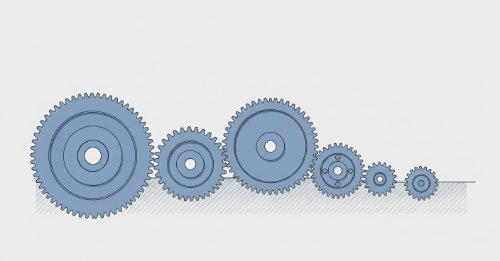Introduction to Dynamic Systems and Vibration - Engineering Mechanics (Undergraduate Advanced)
49
4 hrs
 MEE 206: Engineering Mechanics - DynamicsMaster the principles governing the motion of engineering systems. This learning track provides a complete education in dynamics, systematically building from the kinematics of particles to the kinetics of rigid bodies and culminating in an introduction to dynamic systems and vibration. You will learn to analyse and predict how mechanical systems behave under the influence of forces.
This programme is for undergraduate students in mechanical, aerospace, civil, or related engineering disciplines. It is also essential for practising engineers and applied scientists who require a rigorous, first-principles command of dynamic analysis for their professional work. A prerequisite knowledge of statics, calculus, and vector algebra is assumed.
Upon completion, you will possess the analytical tools to solve complex dynamics problems for particles and rigid bodies using force, energy, and momentum methods. This provides the essential foundation for advanced study in mechanical design, control systems, and structural analysis, and prepares you for demanding technical roles in the engineering sector.
MEE 206: Engineering Mechanics - DynamicsMaster the principles governing the motion of engineering systems. This learning track provides a complete education in dynamics, systematically building from the kinematics of particles to the kinetics of rigid bodies and culminating in an introduction to dynamic systems and vibration. You will learn to analyse and predict how mechanical systems behave under the influence of forces.
This programme is for undergraduate students in mechanical, aerospace, civil, or related engineering disciplines. It is also essential for practising engineers and applied scientists who require a rigorous, first-principles command of dynamic analysis for their professional work. A prerequisite knowledge of statics, calculus, and vector algebra is assumed.
Upon completion, you will possess the analytical tools to solve complex dynamics problems for particles and rigid bodies using force, energy, and momentum methods. This provides the essential foundation for advanced study in mechanical design, control systems, and structural analysis, and prepares you for demanding technical roles in the engineering sector.
Master the principles governing the motion of engineering systems. This learning track provides a complete education in dynamics, systematically building from the kinematics of particles to the kinetics of rigid bodies and culminating in an introduction to dynamic systems and vibration. You will learn to analyse and predict how mechanical systems behave under the influence of forces. This programme is for undergraduate students in mechanical, aerospace, civil, or related engineering disciplines. It is also essential for practising engineers and applied scientists who require a rigorous, first-principles command of dynamic analysis for their professional work. A prerequisite knowledge of statics, calculus, and vector algebra is assumed. Upon completion, you will possess the analytical tools to solve complex dynamics problems for particles and rigid bodies using force, energy, and momentum methods. This provides the essential foundation for advanced study in mechanical design, control systems, and structural analysis, and prepares you for demanding technical roles in the engineering sector.
Course Chapters
1. Introduction
Meaning of vibration, types of vibrations and their descriptions.
No lesson yet.
2. Translation12
Mathematical models of translational mechanical systems.
Chapter lessons
2-1. Introduction21:06
Introduction to modelling of translational mechanical systems.
3. Method of Lagrange's Equations12
Modelling of conservative mechanical systems by the method of Lagrange's equations.
Chapter lessons
3-1. Introduction32:00
Derivation of the Lagrange's equation.
4. Undamped Free Vibrations I
Simple harmonic motion of particles under gravitational and elastic restoring forces.
No lesson yet.
5. Undamped Free Vibrations II
Simple harmonic motion of rigid bodies under gravitational and elastic restoring forces.
No lesson yet.
6. Undamped Free Vibrations III
Applying the principle of conservation of energy to simple harmonic motion under gravitational and elastic restoring forces.
No lesson yet.
7. Undamped Forced Vibrations
Analyzing vibrations due to external periodic forces.
No lesson yet.
8. Damped Free Vibrations
Analysis of free vibrations subject to viscous damping.
No lesson yet.
9. Damped Forced Vibrations
Analysis of forced vibrations subject to viscous damping.
No lesson yet.
10. Electric Circuit Analogs
Applications of mechanical vibrations concepts to analogous electric circuits.
No lesson yet.